


Rhenium chemistry, reduction with SnCl2
In this sub-page of the rhenium chemistry, the reaction of perrhenate with tin (II) chloride is explored under different conditions. This reaction is remarkable and it is quite difficult to get consistent results. Each time, when the experiment is conducted, the results seem to be different. So, when trying to repeat the experiment, it is important to fiddle with the following parameters:
- The total concentration of acid
- Concentration of nitric acid. This is especially important when strongly acidic liquids are used, due to the oxidizing property of nitrate ion under these conditions.
- The use of a second reductor, prior to adding tin (II) chloride.
![]()
Perrhenate in concentrated HCl with quite some HNO3
When tin (II) chloride is added to a solution with perrhenate in concentrated hydrochloric acid, with also quite some nitric acid in it, then a vigorous reaction occurs. A colorless gas is produced, quite some heat and the liquid finally becomes dark brown. However, every time, when the test tube is shaken and still some solid tin (II) chloride is present, the liquid becomes light green/blue for a very short time and then it becomes brown again.
Apparently, the light green/blue species is a reduced species, which is oxidized back by the nitric acid. At a certain point, the green/blue color cannot be obtained anymore. In the following sequence of pictures, it is shown what happens after adding tin (II) chloride. The pictures are numbered from left to right, left being 1 to right being 5.
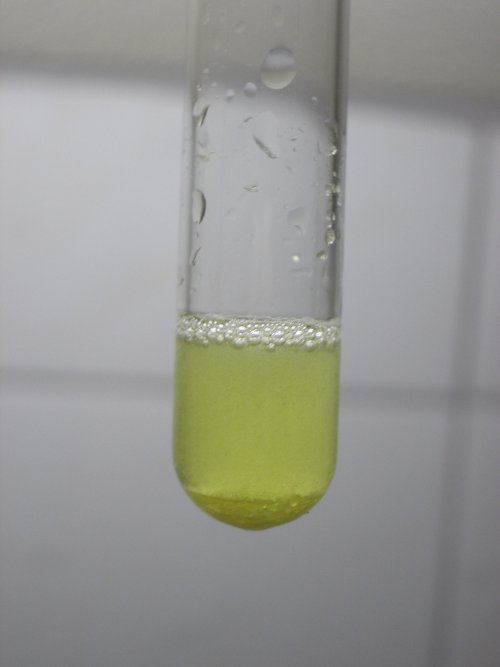
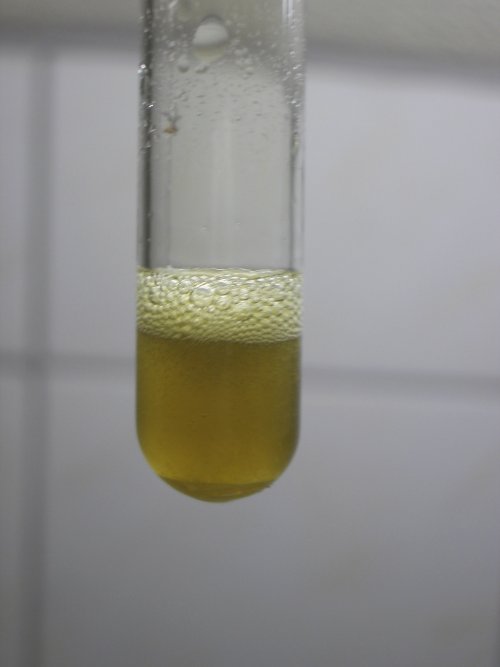
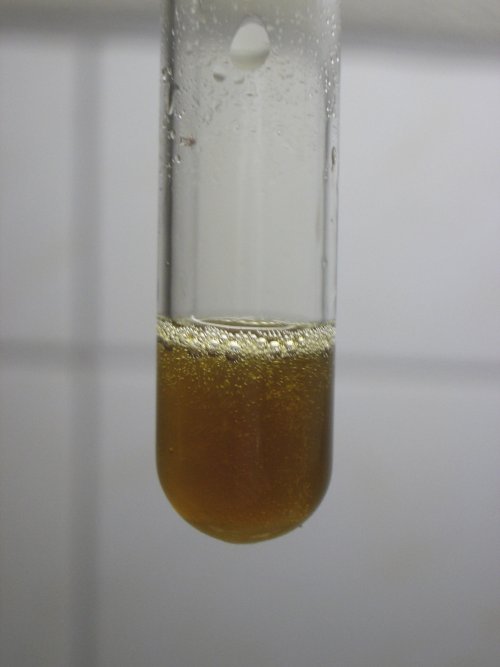
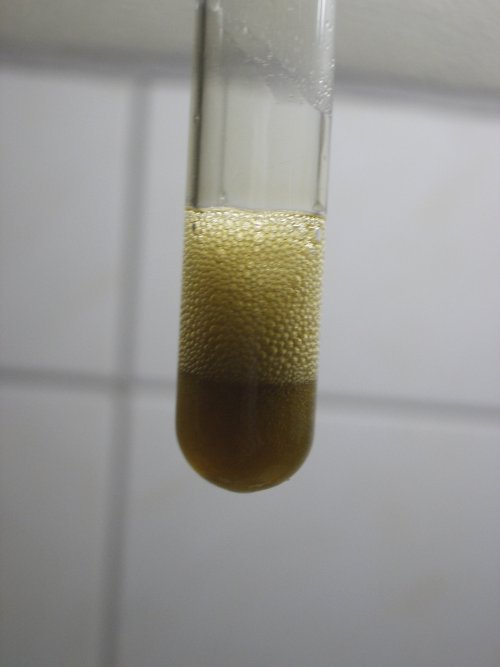
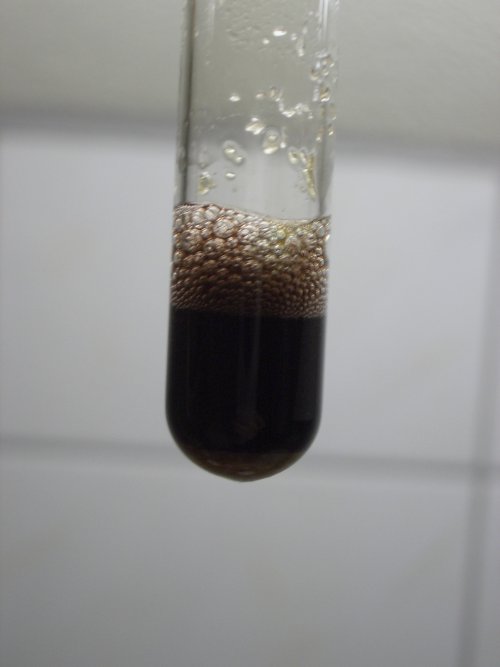
- The tin (II) chloride is added to an almost colorless solution of perrhenic acid in concentrated hydrochloric acid, with also quite some nitric acid in it. Initially, the liquid becomes yellow/green, similar to the color, obtained after adding zinc. This picture shows the green/yellow liquid and some solid tin (II) chloride at the bottom.
- When the liquid is shaken, then a gas is evolved, and the liquid becomes brown.
- When it is shaken again, then the liquid becomes blue/green, immediately followed by evolution of a lot of gas and then it becomes brown again, a little darker as the first time.
- On shaking yet another time, it again becomes blue/green, immediately followed by a vigorous evolution of a colorless gas and while the gas is evolved, the liquid becomes brown again. The fourth picture shows this vigorous evolution of the gas, just after disappearance of the blue/green color. At this step, also quite some heat is produced. The liquid becomes fairly hot.
- Finally, after a last shake, the liquid becomes green/blue (not very clear anymore) and then while evolving a lot of gas, the color turns dark reddish brown, quite different from the shades of brown, obtained before. When this color is obtained, then further shaking does not result in the blue/green color anymore.
Unfortunately, no picture could be captured of the green/blue color. Further below, however, this color is shown in another experiment, where it could be obtained as a stable color.
![]()
Perrhenate in HNO3 reduced with ascorbic acid
In this experiment, again a liquid with perrhenate in concentrated hydrochloric acid with some nitric acid is taken as the starting point. To this, some sodium ascorbate is added (ascorbic acid also is OK). Probably, this treatment reduces the nitric acid in the liquid. However, no evolution of gas is observed if the sodium ascorbate is added and the liquid also does not change color after adding the sodium ascorbate. It remains almost colorless and the sodium ascorbate dissolves.
When the tin (II) chloride is added, then the liquid first becomes somewhat green with a yellowish hue. This is shown in the left picture. The picture also shows that some solid tin (II) chloride is at the bottom of the test tube. The liquid also is quite turbid, this is due to tin (IV) species in the tin (II) chloride and possibly also some hydrolysis. The right picture shows the same test tube, after shaking, such that all tin (II) chloride has dissolved. Because of the turbidity, the picture is taken without light going through the test tube. This results in a somewhat duller picture, but the color can be seen more clearly. It is green with a slight bluish hue. This color also could be observed in the experiment without the ascorbic acid added, but in that experiment the color was transient for just a fraction of a second.
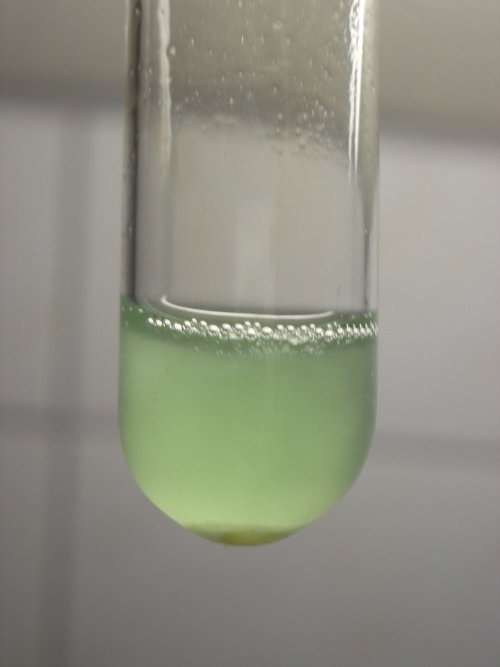
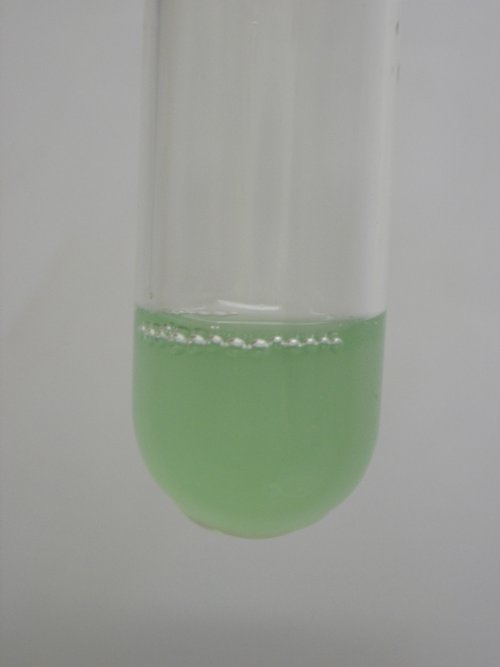
In the experiment with ascorbic acid or ascorbate added, no gas is evolved, when the tin (II) chloride dissolves.
![]()
Moderately concentrated HCl with small amount of HNO3
Yet other behavior is obtained, when the concentration of the acids in the perrhenate solution is lower. In this experiment, a colorless liquid with approximately 15% HCl, some nitric acid, and some perrhenate, is used as a starting point. To this, some tin (II) chloride is added, without first adding ascorbic acid or ascorbate. This gives a result, similar to the result with more concentrated acid, but no transient blue/green colors are obtained on shaking.
Here, four picture are given with the liquid, immediately after adding some tin (II) chloride. Here, the liquid still is almost colorless. It is somewhat turbid, due to the tin (II) chloride. After some shaking it becomes light brown. No yellow color is obtained as with the concentrated acid. A small amount of a colorless gas is evolved. After a second shake some more gas is evolved and the liquid turns darker brown. Finally, the liquid turns dark reddish brown and no gas is evolved anymore. This color is the same as the color, obtained at the end of the experiment with concentrated HCl (see series of 5 pictures above on this page).
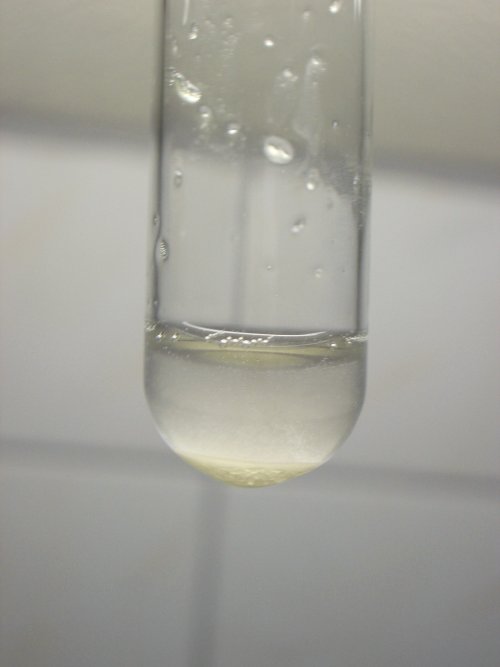
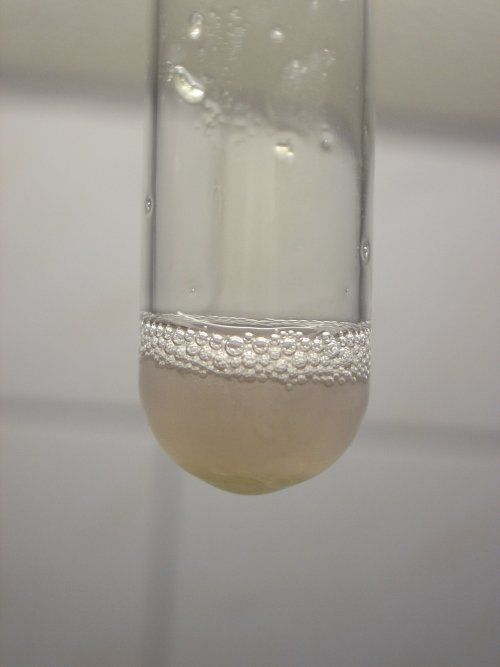
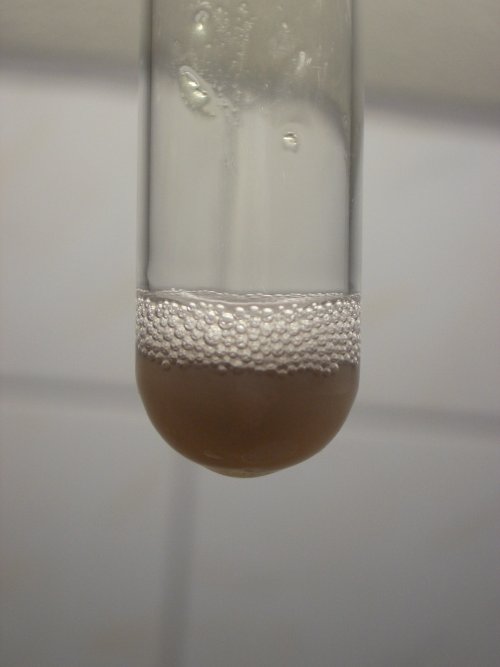
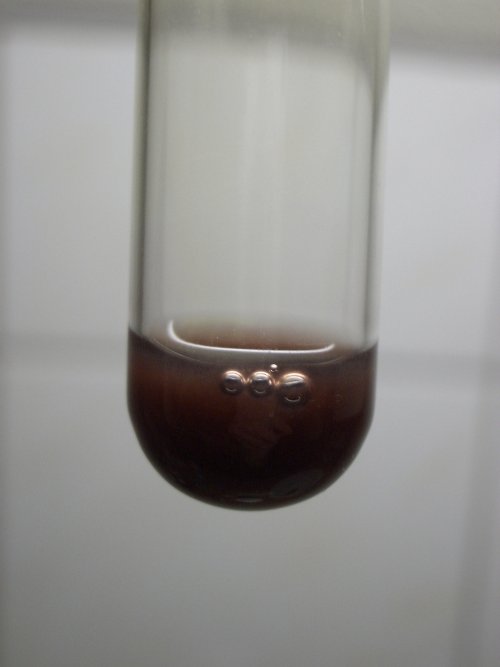
back to main rhenium experiment